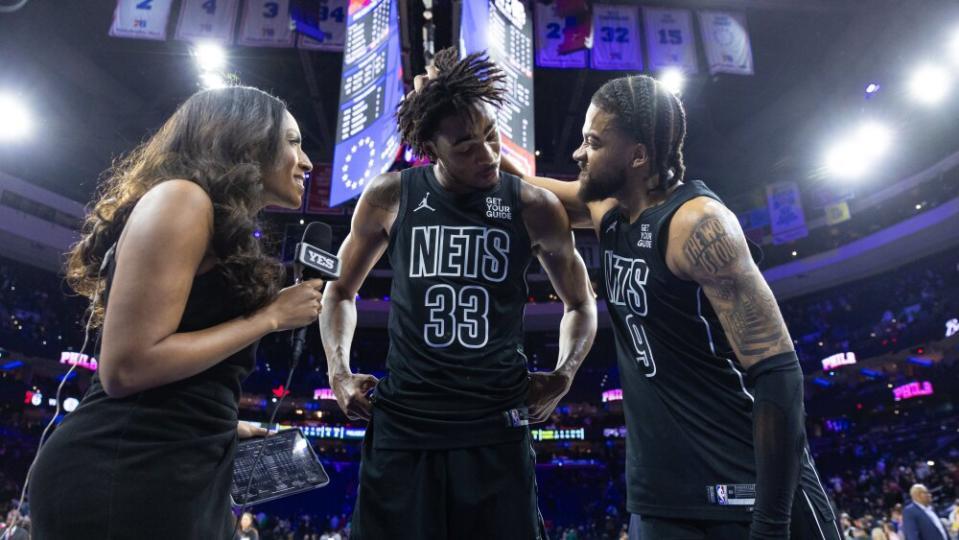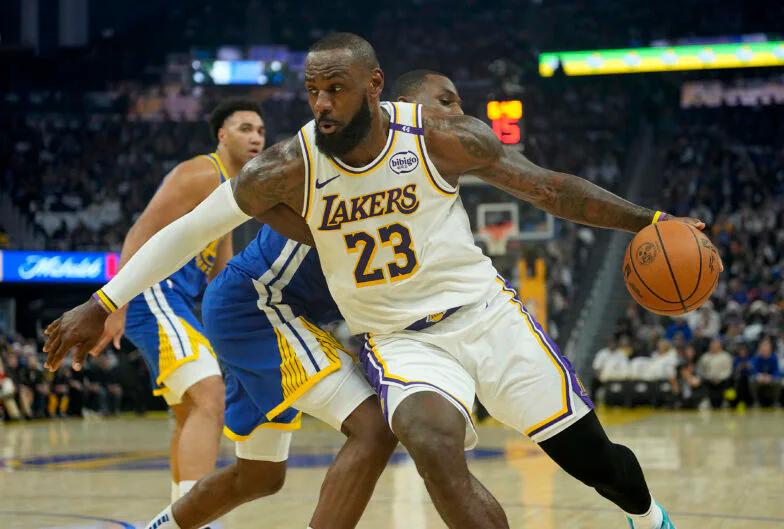Decoding Dunk Scores: Unpacking the 9 Essential Elements of Slams

The NBA Dunk Score, introduced at the beginning of the current season, utilizes player tracking technology and NBA data science to evaluate every dunk in real-time. This cutting-edge model analyzes over 25 unique attributes of each dunk, derived from the player tracking data, to provide an unbiased score.
On Jan. 25, Quentin Grimes registered the season’s highest score at 118.2. But why was this the top dunk of the season thus far? It’s time to take a deeper look at that dunk as well as three other key factors:
Defense
The fast break
Objectivity
These impressive dunks from the pre-All-Star schedule help us better understand how each element can ultimately determine an overall score.
The season leader (… so far)
Quentin Grimes, Dallas Mavericks
Dunk Score: 118.2
Jump: 90
Power: 95
Style: 82
Contest: 81
Grimes’ dunk had a little bit of everything, which is reflected in the four subscores all registering above 80, making it the only dunk this season with an 80-plus in all four.
Grimes’ Jump score was a 90, largely due to a 33.1-inch vertical. His Power score was a 95, thanks in large part to a 25-mph ball speed traveling past the rim. Lastly, his Defensive Contest score earned an 81 due to Luke Kornet’s body angle and positioning on the block attempt.
This well-rounded dunk not only passed the eye test but also excelled within tracking metrics.
The impact of Defensive Contest
John Collins, Utah Jazz
Dunk Score: 113.4
Jump: 85.6
Power: 96
Style: 70.8
Contest: 94.3
John Collins’ poster dunk vs. the Bulls was a showstopper. Here’s what makes it the No. 2 Dunk Score of the season so far.
Out of 7,158 dunks through Feb. 13, only 116 had a Power score over 95. Of those, the second-highest Defensive Contest subscore was 81.
Enter Collins.
This dunk posted a Defensive Contest subscore of 94.3 and a Power subscore of 96. But if Coby White is only 6-foot-5, why would this play carry such a high DC score?
The value of the Defensive Contest is calculated across all frames when the dunking player is in the air.
On this play, White was directly in between Collins for the entire time he was elevating. White also reached a max reach height of 9-foot-2 in his block attempt.
Additionally, Collins posted a Jump subscore of 85.6, making him one of three players this season with an 85-plus Jump subscore and an 85-plus Defensive subscore, one of 13 players with an 85-plus Jump subscore and a 95-plus Power subscore … and the only player with an 85-plus across all 3 of those categories.
Christian Braun, Denver Nuggets
Dunk Score: 106.3
Jump: 89.5
Power: 60
Style: 59.7
Contest: 100
There have been four dunks this season to record a perfect Defensive Contest subscore, including Christian Braun’s poster against the Timberwolves. All four of these dunks have featured a Dunk Score of 90-plus. Then what makes Braun’s stand out?
Braun posted a Jump subscore of 89.5 thanks to his 35.9-inch vert and takeoff distance of 6.8 feet, while the next highest Jump subscore of these four dunks was 58.7. The combination of Jump and Defensive Contest subscores helped propel Braun to the 10th highest Dunk Score of the season.
Coby White, Chicago Bulls
Dunk Score: 65.2
Jump: 69.2
Power: 74.7
Style: 46.0Contest: 13.9
This slam took the internet by storm, and rightfully so, but registered a Dunk Score of 65.2. Why?
The Defensive Contest subscore, one of the most highly weighted factors in the Dunk Score calculation, came in at only 13.9. How is that calculated? While Victor Wembanyama, one of the league’s best rim protectors, was the nearest defender — hence the immense reaction amongst fans — the reigning Kia Rookie of the Year was never directly between White and the hoop.
The Defensive Contest subscore measures the defender’s contest across all frames when the dunker is in the air. That gives a dunk with a contest the whole time the dunker is in the air a higher score than one where the defender arrives late.
Other factors in White’s Dunk Score are player vertical, takeoff distance and ball speed through the rim — all of which ranked outside the top 150 of the season.
Jalen Duren, Detroit Pistons
Dunk Score:107.1
Jump:84.7
Power:83.9
Style:59.5
Contest:88.6
Duren’s dunk registered high subscores in the Jump (84.7), Power (83.9) and Defensive Contest (88.6) categories. Mix that in with some impressive metrics in the Max Ball Height (11.3 feet) and Ball Speed Through Rim (28.5 mph) and that helps you get to his 107.1.
Additionally, his Defensive Contest subscore registered high because his defender was directly in between him and the basket for the majority of his in-flight jump. His defender also attempted to take charge, which is also detected in the model and
provides a slight boost to the score overall.
The impact of the fast break
Obi Toppin, Indiana Pacers
Dunk Score: 68.7
Jump: 40
Power: 36
Style: 100
Contest: 0
East Bay on a fastbreak? That has to be a high Dunk Score, right? Not always.
While Obi Toppin’s slam registered a perfect 100 Style subscore, his other subscores were not enough to vault him to the top of the Dunk Score leaderboard.
While fastbreak slams can be some of the most exciting plays in basketball, a player can’t register a meaningful Defensive Contest subscore if they are alone on the break. Toppin was in this scenario, which lowered his composite score.
His other subscores, Jump (40) and Power (36.1) were brought down due to his vertical only being 23.2 inches and his ball speed through the rim coming in outside the top 600 this season.
Jaden Hardy, Dallas Mavericks
Dunk Score:101.7
Jump:76.7
Power:89.3
Style:72.5
Contest:78.5
On the flip side, Hardy did register a Dunk Score of over 100 on the break. Why? This was one of 10 dunks so far this season where all four subscores were 70-plus. His Jump subscore (76.7) was powered by a combination of his vertical (29.9 inches), takeoff distance (8.1 feet) and max ball height (10.8 feet). His Power subscore (89.3) was helped by his ball speed through the rim (25.1 mph).
He also had a reach-back distance of 1.3 feet which boosted his Style subscore (72.5). Additionally, his defender was directly between him and the rim for most of his time in the air, leading to an impressive Defensive Contest subscore of 78.5.
The impact of objectivity
LeBron James, Los Angeles Lakers
Dunk Score: 69.8
Jump: 42.9
Power: 16.8
Style: 34.3
Contest: 93.3
In his 22nd season, LeBron James is still posterizing players. This dunk, however, is a great reminder that the Dunk Score is an objective output and does not account for a player’s stature — including James’ legendary longevity. The Dunk Score also does not factor in the game situation, like the game score or time remaining, thus giving each dunk an equal playing field.
James’ dunk was his highest Contest score of the season (93.3), but the other subcategories were not as elevated. LeBron’s Jump subscore came in at 42.9 with a vertical of 23 inches and a takeoff distance of 5.5 feet. The ball also hit the front of the rim before entering the basket, dropping his ball speed through the rim down to 10.7 mph, which resulted in a Power score of only 16.8.
Yves Missi, New Orleans Pelicans
Dunk Score: 101.0
Jump: 82.5
Power: 96.1
Style: 65.4
Contest: 65.5
The 20-year-old rookie had one of the early highlights of his career with this poster slam in transition, registering a Dunk Score of 101.
While Missi’s slam qualified for only a 65.5 Defensive Contest score, this dunk proved one of the most powerful of the season (a 96.1 Power subscore). Combine that with a vertical of 30.1 inches and a takeoff distance of 7.3 feet, contributing to an 82.5 Jump score, and Missi’s dunk climbed the leaderboard.
Missi also recorded his second dunk of 2024-25 that topped 100
with this 104 vs. the Grizzlies
.
RELATED STORIES






LATEST NEWS







